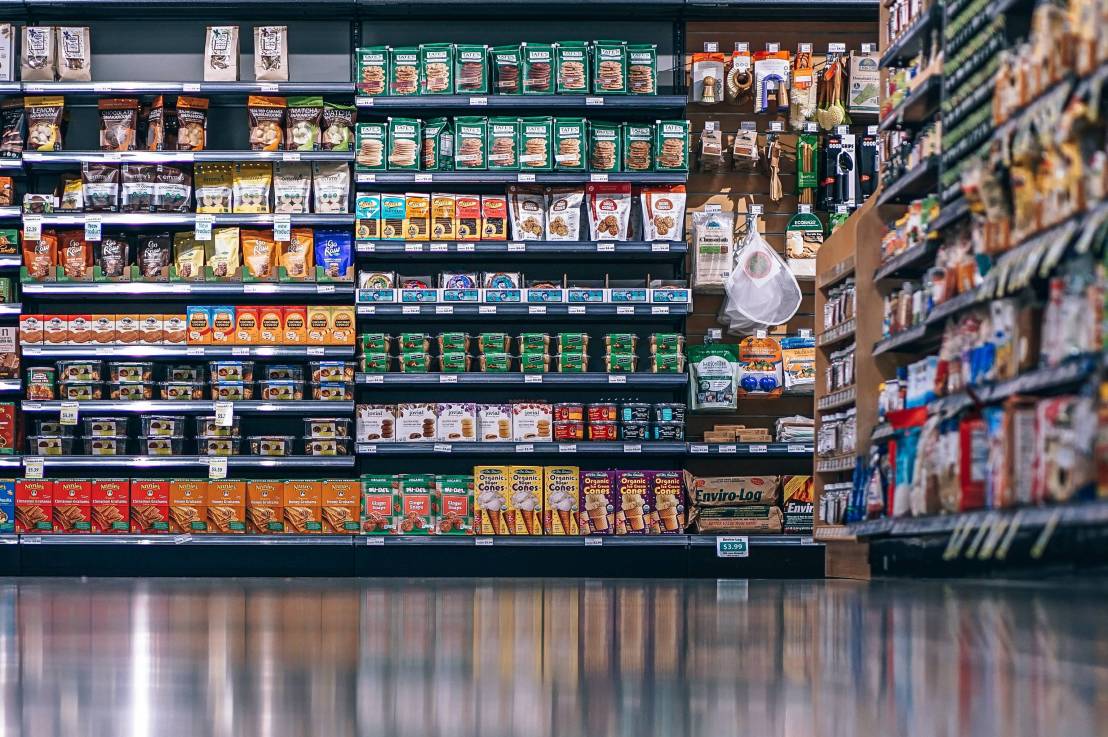Oh, lovely food. We’re blessed to be alive in the 21st century, living in developed countries where supermarket shelves are packed with an extremely wide variety of products. We’re lucky to be able to choose between different brands and types of food. So how do we choose which item to purchase? I’d highly recommend that we read ingredient lists and make conscious, wise choices. And – hopefully, in the future – force brands to increase their standards. Reading ingredient lists can help you save money, stay healthier and avoid disappointments. Here’s why.
You’ll save money
Saving money is the reason that should speak to the majority of people, and making conscious shopping decisions should indeed help with that. One of the examples I like to bring up is small and simple, but it perfectly shows the case – the thing I’m talking about are spice mixes. If you buy one-ingredient packets – spices like cinnamon, basil, coriander, ginger and such – you’re guaranteed to only find that one spice inside the package. But what happens when instead you go for a spice mix, like gingerbread spice mix, spaghetti Napoli spice mix etc? Well, in most cases you’ll get a few mixed spices… plus a huge amount of salt, flour, sugar and other cheap filling ingredients. Both spice mixes and simple one-ingredient spice packets usually have similar price and weight. However – salt, sugar and flour are much, much cheaper than actual spices, so when buying those mixes you actually buy overpriced sugar or salt. My most prominent example here are gingerbread spice mixes – I’ve seen (and used) some where 75% (!) of the packet’s contents was flour. Result? I had to use four packets instead of one, because after the first one I couldn’t even smell the scent of gingerbread in the dough. I then made sure to read the ingredient lists before buying my spices and found gingerbread spice mixes with no flour or sugar, for the same price. Making the mix yourself by mixing together the spices bought individually would work as well.
Another example I’d like to bring up are vitamin supplements, which come in many different forms, ingredients and prices. In this case by “ingredients” I mean the vitamins in each tablet. It’s always a good idea to compare a few products from different price levels – sometimes taking one tablet from a more expensive box every other day can be more efficient (cheaper with higher vitamin content) than taking one cheaper tablet every day.
You can choose healthier options
I do realize that not everyone is interested in keeping their diets healthy (it is a shame though, we should take care of ourselves, also in terms of what we eat!). However, you can often make a healthier choice without having to completely give up on a specific type of product. For example – when buying sweets, you can check whether they contain only plain sugar (which is bad, but not horrible) or glucose-fructose syrup (much worse than plain sugar) or artificial sweeteners of still unknown effects on our bodies. Crisps? They can be produced using different types of oil – some of them much worse for us than the others. And overall, the same type of product, tasting pretty much the same, by two different brands can be completely different in terms of their ingredient lists and impact on our bodies. I recently had to buy puff pastry (I love to bake but I’m yet to try to make my own puff pastry… it’s so much work!). I managed to find one only containing flour, butter, water and salt. Sounds like what should be found in puff pastry and nothing else, right? Well, right next to it was a sheet of puff pastry by a different brand – 19 (!) ingredients on the list, including a bunch of preservatives.
Big fonts lie
In most countries, food ingredient lists are controlled by law and are bound to be correct (which is why we can trust them). Sadly, the same rule doesn’t apply to front labels and overall product design – or at least not entirely. Brands love to put the most exotic out of their product’s ingredients on display. When they sell pineapple smoothie, it would be illegal for them to not include pineapple in the ingredient list. However, making pineapple 0.5% of the final product is perfectly legal. And then you buy a pineapple smoothie (because you love pineapple and expect the smoothie to taste of pineapple) and the flavours that hit you are apple… banana… orange, perhaps… but where’s the pineapple?! It’s not a big crime, I know – it’s just a silly bottle of smoothie. But one thing I hate more than anything else is being lied to. Even when it comes to such silly things.
Do you read food ingredient lists? If so – what was the most ridiculous product you’ve seen? Was there something that made you particularly annoyed?





Great thoughts, Alphe. Can these ingredient lists really be trusted? to a point. I read labels frequently because of sodium intake and cholesterol. Imagine a time without the labels, a free for all for the manufacturers.
LikeLiked by 1 person
I think it depends. I don’t know the legal aspect of it in the US, but I’d assume it should be similar to regulations imposed by the EU on European countries – and labels indeed have to be correct here. Brands are obliged to list all ingredients (in a font that’s actually possible to read) as well as nutritional value. I’d imagine it is technically possible that labels still lie despite the regulations, though I don’t think they do – in case of an unexpected control, the brand would face serious legal consequences. And since – sadly – many people don’t pay the slightest amount of attention to what they eat, there’s no real benefit of lying on labels people won’t read anyway.
LikeLiked by 1 person
I agree, more people should pay more attention to what they purchase. I was in the grocer today, went down the Chips isle and thought to myself – I’m in the Sodium aisle! Having high BP, I have to watch the sodium intake.
LikeLiked by 1 person
So true! I believe it’s so important to look at what’s in our food – you’d be surprised how many everyday items contain added sugar, for example.
LikeLiked by 1 person
That’s true! Sugar is addicting and they add it… well, to almost everything, really. That’s one of the reasons why I prefer to make most things from scratch, all by myself.
LikeLike
I’m getting better at reading the ingredients and breakdowns. A few months ago, I switched from a multivitamin to a few individual supplements that I needed because of reading the lists. Great post!!
LikeLiked by 1 person
Nice post! I have to watch the ingredients and nutrition facts due to some health issues. I still wonder if I can trust some of them, though.
LikeLiked by 1 person
I guess it depends, but I don’t think there’s any real benefit of lying for the manufacturers – sadly, most people don’t read ingredient lists anyway.
Here in the EU it’s certainly illegal to omit ingredient lists altogether or provide false information. Whether the data is actually always 100% correct… who knows.
LikeLiked by 1 person
Yes!! I always always always read ingredients list. I actively stay away from MSG, high fructose corn syrup, & dairy (because I have to). It’s crazy how many unneccessary items are added into products. I even read over my cats’ food ingredients lol.
LikeLiked by 1 person
Actually – aren’t pet foods better quality than what is sold for humans? I wouldn’t be surprised if that was the case. After all, the majority of processed packed foods sold for humans is just pure junk. 😉
LikeLiked by 1 person
Hahaha no it is not better than human food, there’s always a lot of crap in their food, too but I at least make sure they are getting real meat and not by-products or worse.
LikeLiked by 1 person
Awh, that’s actually surprising!
LikeLiked by 1 person